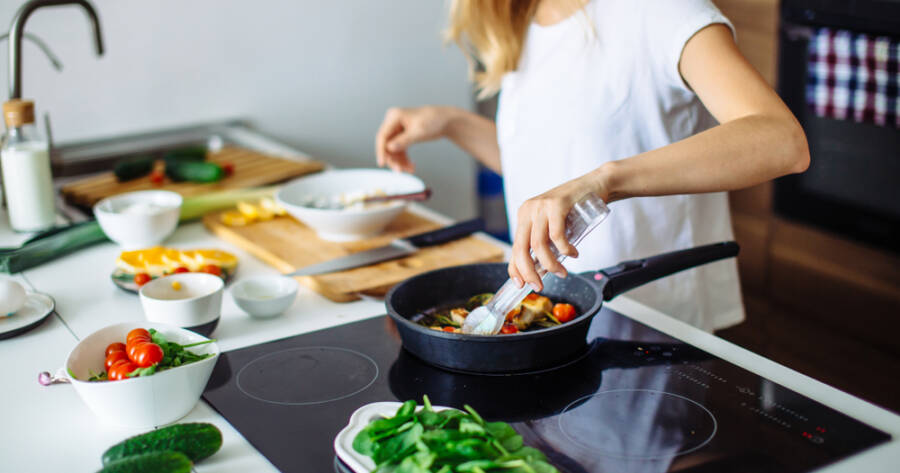Cooking for one doesn’t have to mean boring meals or a fridge full of spoiled leftovers. With the right approach, solo cooking can be simple, satisfying, and even enjoyable. Whether you’re living alone, working from home, or just trying to streamline your meals, a few small adjustments can help you eat well without wasting time, money, or food.
Here are smart, practical tips to make cooking for one feel more manageable—and a lot more rewarding.
Embrace Flexible Ingredients
One of the best ways to avoid food waste is to shop for ingredients that can be used in multiple meals. Instead of buying specialized items for each recipe, focus on versatile staples that can be mixed and matched throughout the week.
Great examples include:
-
Rotisserie chicken: Use it in salads, wraps, sandwiches, or stir-fries.
-
Eggs: Make scrambled eggs for breakfast, add them to fried rice, or top a grain bowl.
-
Canned beans: Toss into soups, tacos, or pasta for a quick protein boost.
-
Greens: Use for salads, sauté them for dinner, or blend into smoothies.
When you think about meals as components rather than complete recipes, it becomes easier to build a variety of dishes from a few essentials.
Learn to Love Your Freezer
Your freezer is your best friend when cooking solo. Freezing helps prevent food waste and makes it easier to plan ahead without relying on takeout or last-minute grocery runs.
Here’s how to make the most of it:
-
Freeze individual portions of cooked meals like soup, chili, or pasta sauce for quick grab-and-go dinners.
-
Store leftover ingredients like sliced bread, chopped herbs, or extra broth in labeled containers or freezer bags.
-
Buy frozen produce for stir-fries, smoothies, and sides—it lasts longer and reduces the pressure to use everything right away.
Just be sure to label and date everything so you know what’s what, and rotate older items to the front so they don’t get buried and forgotten.
Master the Art of the One-Pan or One-Bowl Meal
One of the simplest ways to keep cooking low-effort and low-mess is to use fewer dishes. One-pan meals, sheet pan dinners, and one-bowl salads or grain bowls are easy to make, endlessly customizable, and perfect for solo portions.
Ideas to try:
-
Sheet pan chicken and vegetables: Toss everything with oil and seasoning, roast, and you’re done.
-
Stir-fried rice or noodles: Use whatever protein and vegetables you have on hand.
-
Grain bowls: Start with a base like rice, quinoa, or couscous, then add protein, veggies, and a drizzle of sauce or dressing.
These meals are not only fast and flexible—they also make cleanup a breeze.
Scale Down Recipes (Or Don’t)
Most recipes are written for four or more servings, but that doesn’t mean you have to skip them. You can either scale down the ingredients to make a single portion, or cook the full recipe and portion out leftovers for future meals.
If you choose to scale down:
-
Use simple math to divide ingredients (or find a recipe converter online).
-
Consider cooking staples like rice or pasta in bulk, and just add fresh toppings each time.
If you cook the full amount:
-
Store leftovers in glass containers with tight lids.
-
Get creative with leftovers by turning them into something new—last night’s roast veggies can become today’s omelet filling or grain bowl topping.
Keep It Fun and Low-Pressure
When you’re only cooking for yourself, there’s freedom to experiment and enjoy what you really like. That means you can skip ingredients you don’t enjoy, try new flavors without pressure, and ditch the formal dinner setup if you want.
-
Cook what sounds good, not what you feel obligated to make.
-
Plate your meals with care—even solo dining can feel special with a nice setup.
-
Try “theme nights” like taco Tuesdays or noodle nights to make meal planning more fun.
Cooking for one isn’t about perfection—it’s about making food that fuels and satisfies you, without stress.
Solo Meals, Simplified
Cooking for yourself can be empowering, nourishing, and even fun when you simplify your approach and stock your kitchen with smart ingredients. With a little planning, some freezer space, and a few go-to meals, you can enjoy stress-free solo cooking that minimizes waste and maximizes satisfaction. You don’t need a crowd to make mealtime meaningful—you just need a plan that works for you.

